INTRODUCTION
Turbocharger is highly utilized in the diesel type engines for increasing the overall efficiency. By using the turbocharger effectively the specific fuel consumption of the engine is reduced significantly. The two types of impellers called compressor impeller and turbine impeller were fixed on either side of the turbocharger. Both the impellers has to work sequentially for compressing and expanding the air simultaneously. The selection of material for the impeller design plays a significant role in deciding the overall efficiency. The impeller material should withstand the high pressure of incoming compressed air at the time of working. Many materials were experimented by the researchers for improving the performance of the impeller used in the diesel engines. The impeller angle plays a significant influence over the performance of the turbocharger. The Inconel alloy were selected and simulated by using its material properties which exhibited a 15% improvement over the existing type of conventional turbocharger. The nickel alloy and titanium material also experimented by many researchers towards its implementation in impeller of the turbochargers. The various composite materials also developed and experimented by the researchers for matching the specific properties required by the impeller. The challenge faced in conversion of a composite material for its effective application in impeller production lies in the near net shape machining which is a cost consuming process. So the usage of the existing alloys by enhancing its properties is carried out by many researchers. In the present study three materials say Nickel, Structural Steel and Titanium were considered for the analysis. The material properties of these three materials were considered. The 3D model of the impeller were designed by using CREO software.The created models were exported to ANSYS software where the static structural analysis, thermal analysis were performed by approximating the corresponding material properties. The principal stress and strain conditions were thoroughly analyzed along with heat flux properties.
OBJECTIVES OF THE STUDY
· To design the impeller of a turbocharger using CREO software using three materials (Nickel, Structural Steel, Titanium).
· To perform structural and thermal analysis of the impeller for the above specified materials.
· To discuss and compare the results and the best material is chosen for the application of the impeller.
EXPERIMENTATION
The dimensions of the impeller used for this investigation is taken from the real diesel engine turbocharger. The dimensions were measured and it is used for the development of 3D model by using CREO software. The picture of the impeller considered for this study is shown in figure 1 as follows.
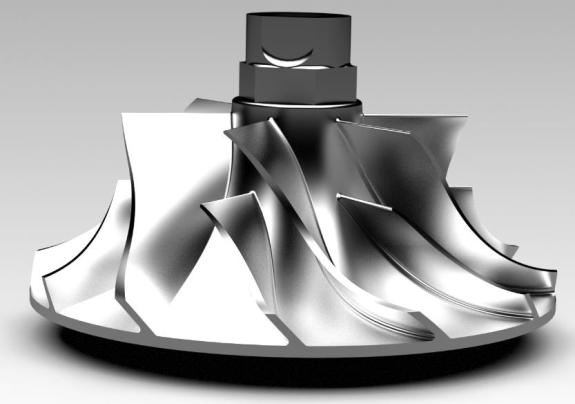
The properties of the structural steel, titanium alloy and nickel alloy material selected for the analysis is shown in table 1, 2 and 3 respectively. Based on the material properties assumed the required dimensions were designed by using the CREO software. The error in the geometrical file is checked carefully by analysing the overlapping of facets, geometrical data redundancy and vertex to vertex rule between the facets. After confirming the geometrical error now the created solid model is checked for the mass property calculations like mass, volume, density. After analysing the mass property calculations carefully the created 3D models are exported to a neutral file format called standard for exchange of product data to facilitate the easy file transfer between various vendor software.
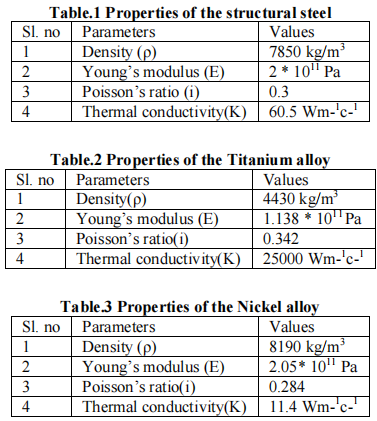
The finite element analysis was carried out over all the three assumed materials separately. The static structural analysis and thermal analysis was carried out. Both the analysis was carried out by using ANSYS version 14.5 software. The finite element analysis of the every material is discussed in detail in the following figures. The model of the impeller loaded into the ANSYS version 14.5 is shown in figure 2.The loaded impeller is then finely divided into the meshes by using hexahedral elements for ensuring the very accurate results. The image of the meshed impeller design is shown in figure 3.
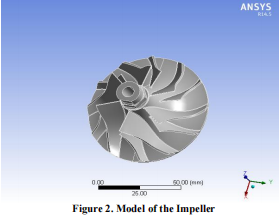
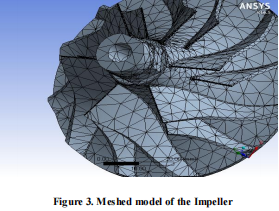
The constraints used for the fixing the impeller, rotational velocity specified and maximum pressure conditions used are shown in the figures 4, 5, 6 respectively.
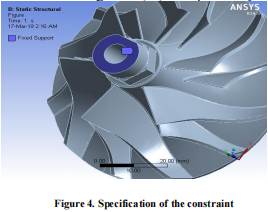
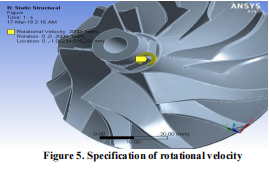
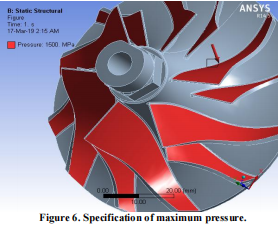
RESULTS AND DISCUSSION
FEA RESULTS OF STRUCTURAL STEEL
The finite element analysis of the structural steel was carried out for analysing the two important properties namely static structural and thermal analysis. The total deformation, equivalent stress analysis, equivalent strain analysis of the structural steel is shown in figure 7, 8, and 9 respectively
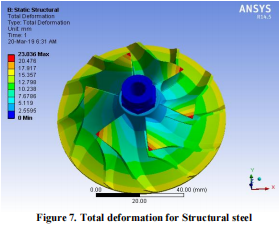
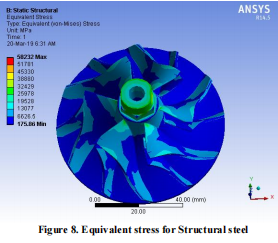
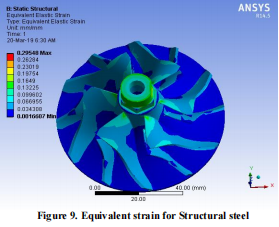
The total heat flux and directional heat flux analysis for the structural steel is shown in figure 10 and 11 respectively.
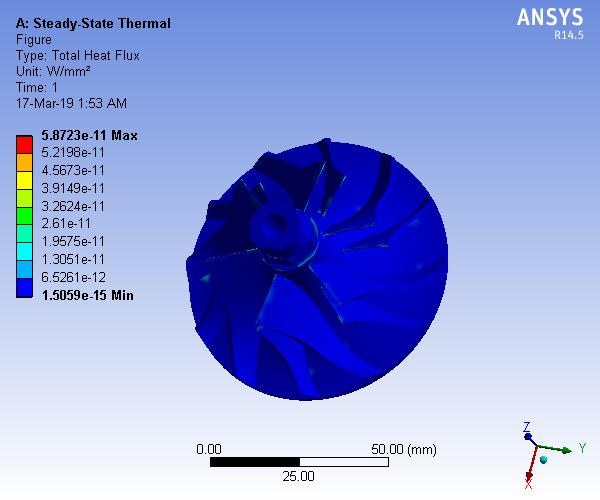 Figure 10. Total heat flux for Structural steel
Figure 10. Total heat flux for Structural steel
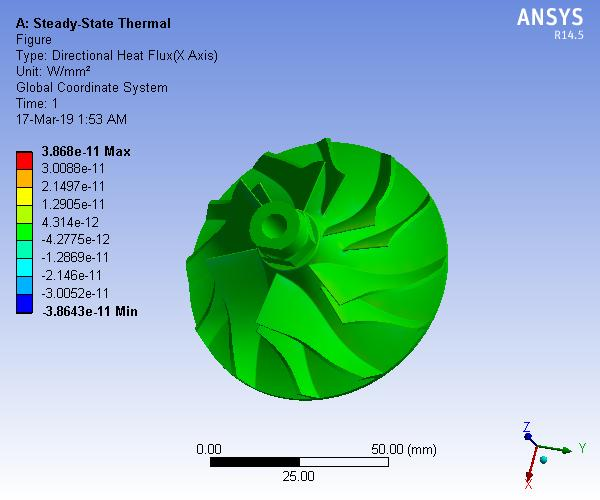
Figure 11. Directional heat flux for Structural steel
FEA RESULTS OF TITANIUM ALLOY
The total deformation, equivalent stress analysis, equivalent strain analysis for the titanium alloy is shown in figure 12, 13, and 14 respectively. The total heat flux and directional heat flux analysis for the titanium alloy is shown in figure 15 and 16 respectively. The same procedure was followed for the static structural analysis and the thermal analysis of the titanium alloy as like the structural steel. The same constraint and rotational velocity is considered.
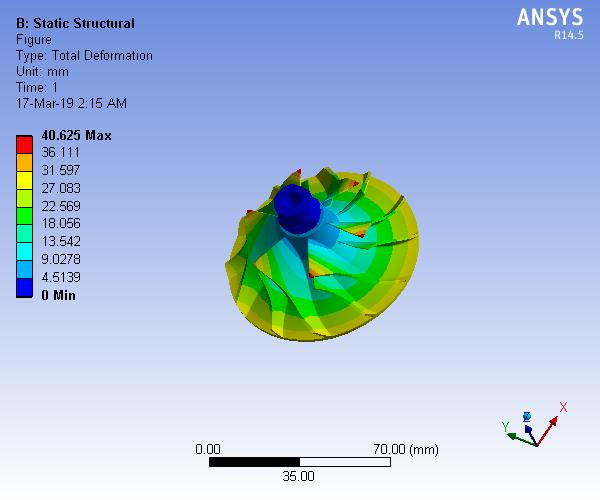 Figure 12. Total deformation for Titanium alloy
Figure 12. Total deformation for Titanium alloy
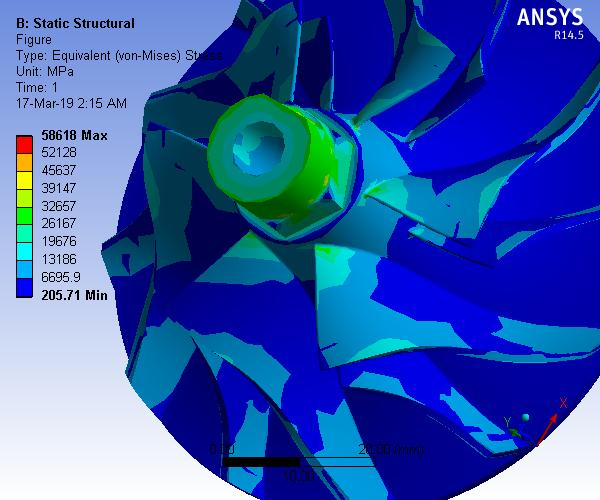
Figure 13. Equivalent stress for Titanium alloy
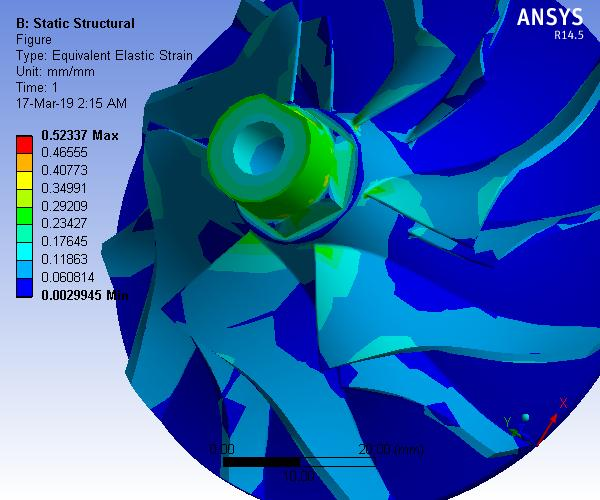
Figure 14. Equivalent strain for Titanium alloy

